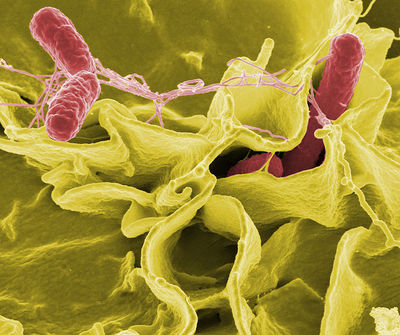Source: National Institutes of Health
Looking for an example of how environment affects the evolution of a species? Look no further than your own forearm. A study by Dr. Julia A. Segre and her team from the National Human Genome Research Institute has found that for bacteria our skin provides an assortment on tiny ecosystems. Each region of the body’s skin contains bacteria that have evolved to live in those specific regions, just as larger organisms adapt to their own ecosystems.
Dr. Segre and her team took tens of thousands of sequences of a specific bacterial gene sequence to see exactly how many different bacteria had evolved for each region. The middle forearm, they found, contains the most biodiversity with 44 different species, while the skin behind the ear is the least diverse with only 19 species present.
To read more about the study, check out The New York Times‘ article. Subscribers to Science can read the team’s original paper.


